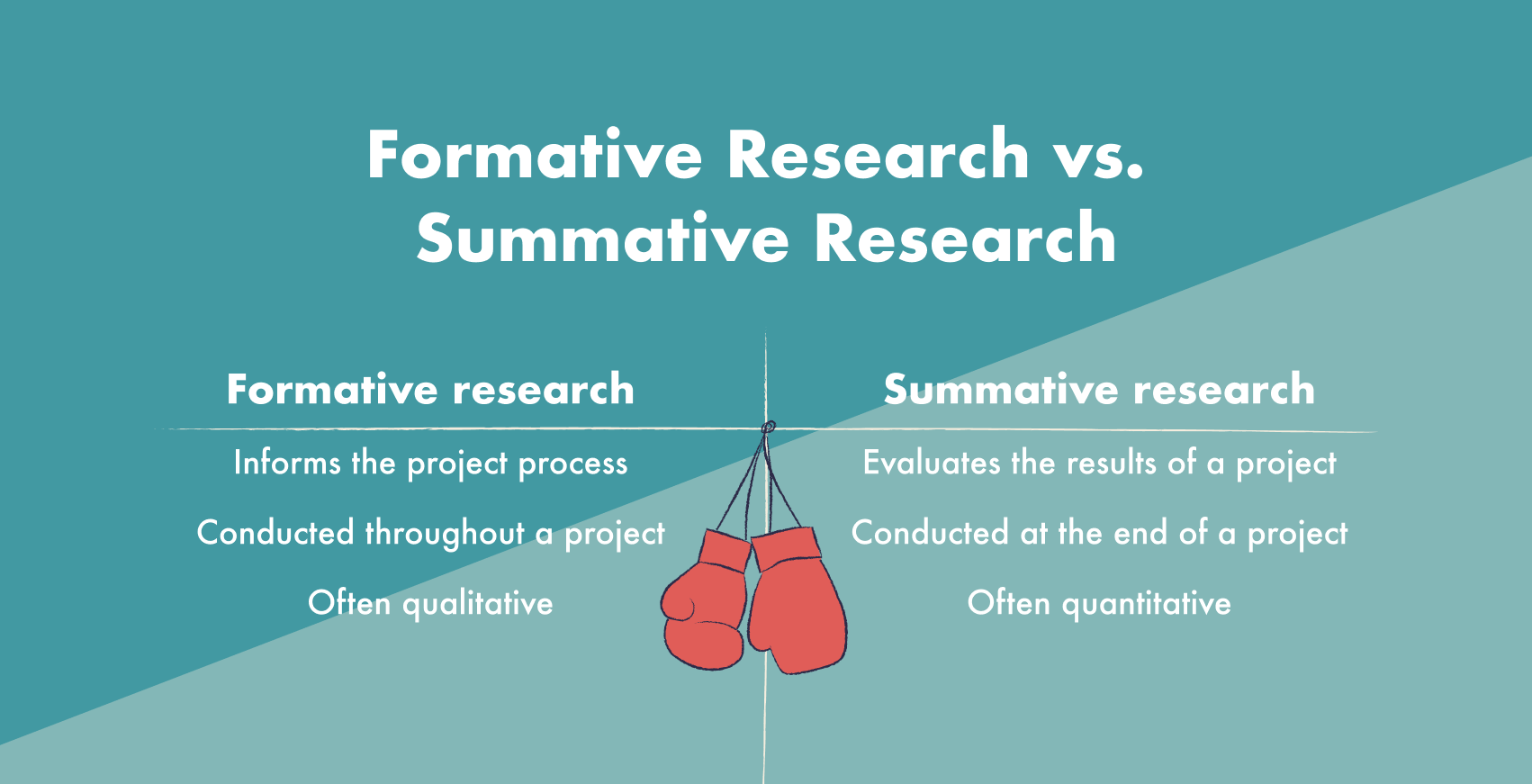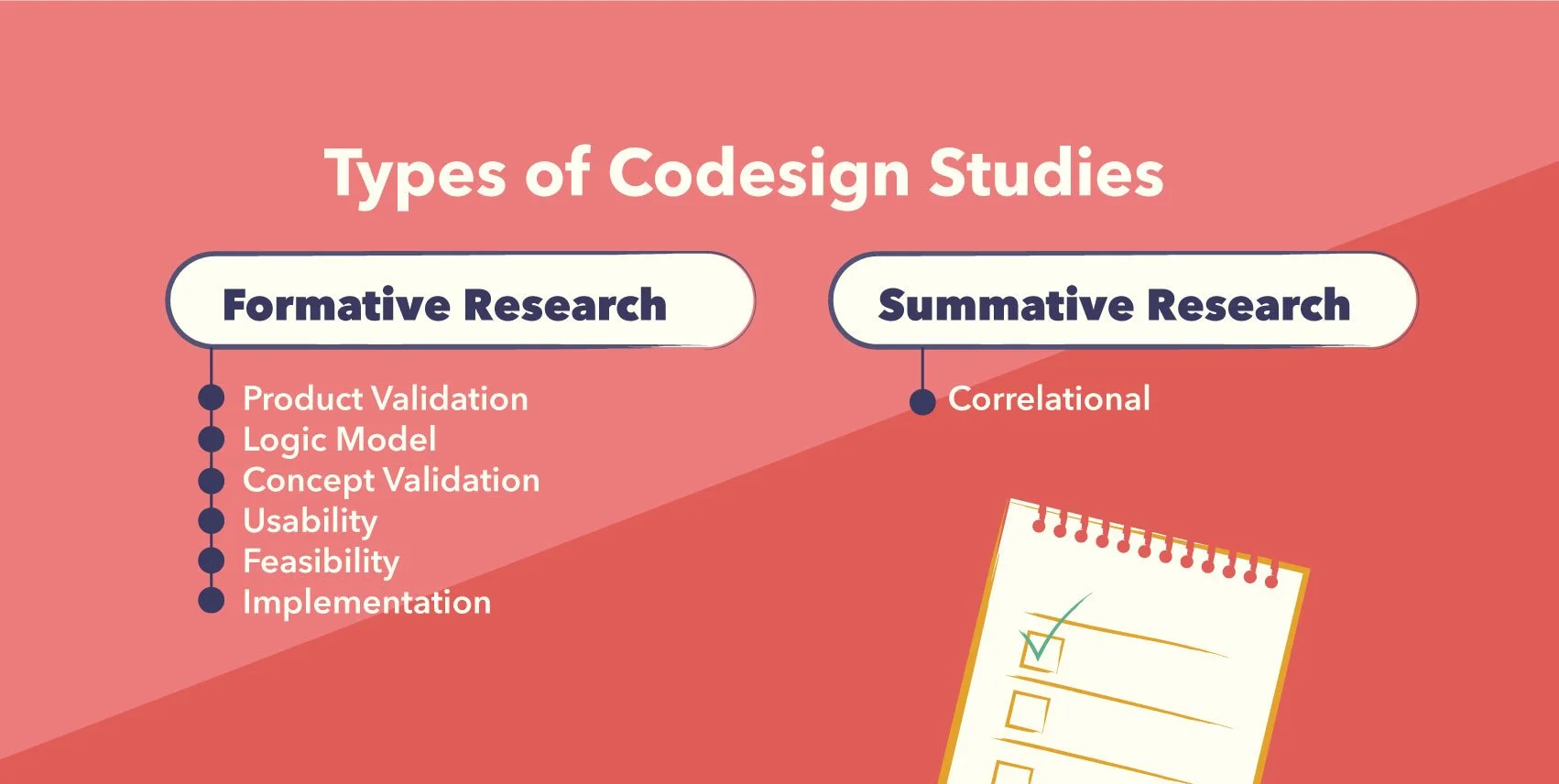When it comes to product design in the edtech space, the terms formative and summative research come up a lot. The reason for this is that both are forms of evaluative research that help improve product design.
But while summative research is often cited as the “gold standard” in research, formative research is just as important, especially for edtech companies.
Why?
When an edtech company jumps straight into summative research, they often fail to get any results, positive or negative. This is because they don’t have the fidelity of usage with their products that is required to conduct summative research. Summative research will tell you whether or not your product works, but it is formative research that will help you understand WHY it works or doesn't.
Let’s take a deeper dive into the difference between formative and summative research, why using both is important, and how codesign can help refine these two aspects of research.
What are formative research and summative research?
As noted earlier, formative and summative research are used to evaluate product design. However, which of these two evaluations you conduct will depend on where you are in the design process.
Formative research is a type of evaluation conducted throughout a design project to inform the design process. It’s aimed at forming the objective of the process and charting a helpful course based on clear theoretical foundations.
This type of research is also considered exploratory since it provides information that helps to incrementally improve product design. Formative research is usually qualitative.
Summative research, on the other hand, evaluates how successfully a design project can achieve the desired outcomes set in the formative research process. It’s often quantitative.
Unlike formative research, which seeks to steer the design process in the right direction, summative research is more of an evaluation of the implementation of the overall process of a product. Its goal is to measure various aspects of a product’s success against predetermined parameters.
Questions to ask during formative research
The following are some possible questions to ask during formative research:
How do students or teachers use the product in the classroom? In what ways do they use the product differently than intended, and why? Do they understand the navigation?
What usability issues exist in the product interface?
Does the product interface comply with recognized usability principles?
What are the barriers to classroom implementation?
What support materials and guides can be provided to help facilitate use in the classroom?
Questions to ask during summative research
Some questions you may want to ask during summative research, include:
Does increased usage of the product correlate with improved student outcomes, according to X metric?
How does the product compare to the industry benchmark?
It’s clear that both formative and summative research are important since they correspond to different, yet crucial research goals. That said, codesign can enhance these two types of evaluation.
The role of codesign in formative and summative research
Codesign can support both formative and summative research, making for a more well-rounded project that takes the inputs of multiple stakeholders—internal and external—into account to devise an effective and equitable solution.
Creating solutions with value for end users
In formative research, codesign can help create a product that’s more likely to be a market fit by gathering the insights from potential users on the value the product would add to the school/classroom. The fact that codesign involves diverse stakeholders early on helps to ultimately create a product that aligns with market demand and meets the needs of educators and learners.
Better discovery of meaningful research goals
Codesign supports both formative and summative research by discovering the research agendas instead of ‘dictating’ them.
In traditional research, the end goal is often announced to the research participants in a unilateral, top-down way. In contrast, codesign allows multiple stakeholders - the participants, researchers, and solution providers - to bring their respective skills, assets, and backgrounds to the table to carry out a project that not only takes into account the needs of a diverse group of affected people, but is built on similarly diverse skill sets and cultural sensibilities.
Creating sustainable product with impact
Codesign supports both formative and summative research by putting co-creation with the end user at the heart of the research processes.
An edtech product can only create an impact on student outcomes if it meets certain basic conditions. Teachers need to enjoy the user experience, know how to use it, and understand its value. These are the aspects of a product that formative research focuses on. It doesn’t matter if a product is developed according to learning sciences and aligned learning standards if it’s a chore to use.
By using Codesign research in formative stages, companies can work with the school community to develop best practices for implementation and create a tool that’s sustainably used over many years. These are the conditions that are necessary to measure the impact of a product on student outcomes.
What we offer
At Leanlab, we offer codesign research services to help edtech companies create products that solve problems.
The various types of research listed below will help you do everything from understanding if a product prototype will be worthwhile, to determining whether it’s usable and integrates well with other tools, to figuring out if the product is achieving its intended outcomes.
Formative research services
Concept Validation: obtain feedback on a product concept from target end users and validate that the product is needed.
Logic Model: understand and illustrate the specific mechanisms of a product that lead to desired outcomes.
Product Validation: understand from target end users how the product adds value and would be used concretely in the classroom.
Usability: improve product’s ease of use and appeal with insights direct from actual end users.
Feasibility: identify best implementation conditions & environment for sustainable product use.
Implementation: test and validate sustainable product adoption and implementation at scale within schools & classrooms.
Correlational: collect preliminary evidence that connects the product’s usage to intended outcomes.
Summative research services
Correlational research: This research investigates the possible relationship between a solution’s use and its intended outcomes. The prerequisites for correlational research are the same as those for implementation research, plus consistent usage year over year.
Researching right
If you want to create an edtech solution that has a great user experience and makes an impact, it’s crucial to include both formative and summative research in the design process.
Moreover, adding codesign will strengthen both types of research, creating a user-centered design process that leads to the development of solutions that benefit users for years to come.



